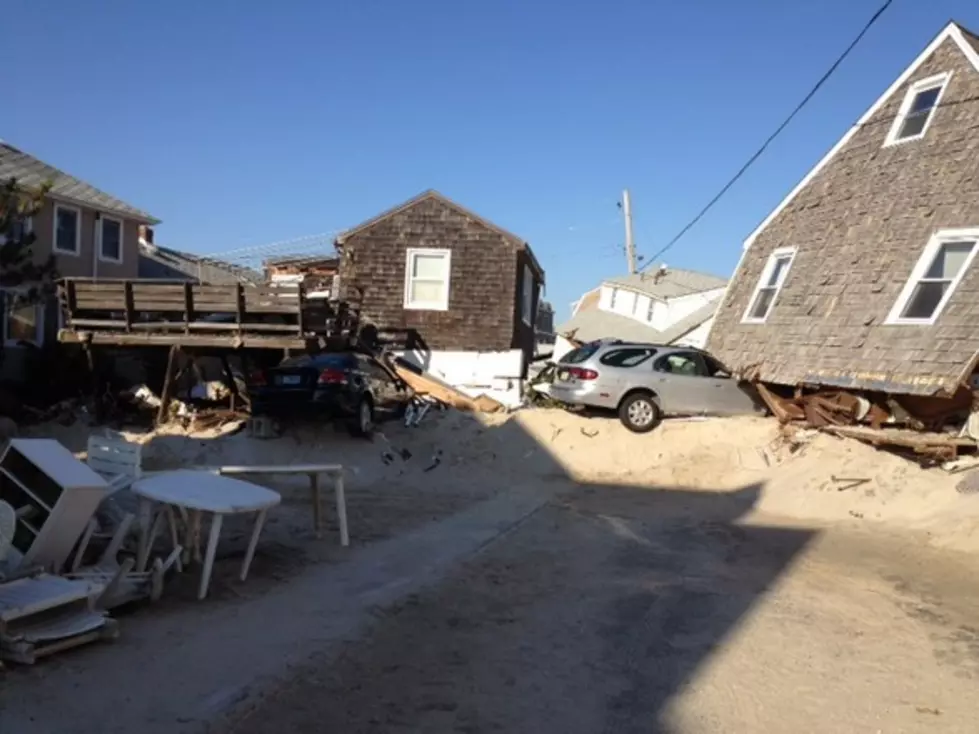NJ Inland Towns See No Solutions After Sandy
Images of New Jersey's devastated shoreline captivated the nation in the days after Superstorm Sandy.
Less noticed was the enormous damage caused inland when a mile-and-a-half-long earthen barrier along and near the Hackensack River was breached, sending a tidal surge washing over parts of several towns, damaging more than 2,000 homes and other buildings.
Now attention is turning to what can be done to prevent similar river flooding in future storms, and townspeople and officials don't like what they are hearing -- because no one seems to own the problem.
The Associated Press found little consensus among state and local agencies on the number of earthen barriers, or berms, who is responsible for maintaining them and whether they are, or were, even meant to provide flood protection.
What's more, the New Jersey Department of Environmental Protection said it isn't responsible for regulating them.
The lack of answers has been particularly frustrating for Little Ferry Mayor Mauro Raguseo, who watched as 80 percent of his town flooded in the early morning hours of Oct. 29, forcing rescuers to take people out of their homes by boat. Flooding also severely damaged the town's fire and police buildings in the town of about 10,700 residents and destroyed nine municipal vehicles.
At a state Senate hearing in December, Raguseo called for an investigation into the berms and, more broadly, the flood control plan for the Meadowlands region, an area best known for being home to MetLife Stadium, where the New York Giants and Jets play.
"This is not a witch hunt, we are not blaming everyone," Raguseo said in an interview. "We need information so we can lobby to make changes that need to be done so this never happens again."
Easy answers haven't been forthcoming, starting with the 8,300-foot-long, 8.5-foot-high berm identified by Gov. Chris Christie in the chaotic first days after the storm as having failed in six places.
At the same Senate hearing, several weeks after the storm, state DEP Commissioner Bob Martin was unable to offer any insight.
"We don't have records of that berm, of when it was built and how it was built originally," he told committee chairman Paul Sarlo. "It's not something the state keeps, it's not something we regulate. We regulate dams."
The berm actually was built in 2010 as part of a project that has turned a former dumping ground west of the New Jersey Turnpike and north of MetLife Stadium into a tidal wetland with vegetation and wildlife.
According to Andrew Derickson, vice president of Kane Mitigation LLC, the company that finished building the berm and is responsible for maintaining it, the berm was built primarily to control the movement of tidewaters in and out of the wetlands area and not for flood protection.
Still, a brochure published by Kane in November 2010 describes one of its tidal restoration strategies for the site as to "build flood control berm protecting neighboring development."
The land on which the berm sits is leased to Kane by the Meadowlands Conservation Trust, a public/private partnership formed to acquire and preserve environmentally sensitive land in the area.
Compounding the confusion for flooded homeowners, dozens of berms of various lengths and heights dot the Hackensack, according to Tom Marturano, director of natural resources and solid waste for the Meadowlands Commission, the zoning and planning agency for the 30-square-mile area along the river. The Meadowlands Commission and Conservation Trust share some staff and facilities but are separate entities.
Some of the berms are simple earthen barriers made by hand that date back more than 100 years and were built for mosquito control or agricultural purposes, Marturano said. No comprehensive record exists of who built them or when.
What is known is that they are insufficient to stop a tidal surge of the magnitude produced by Sandy, which sent tidal waters several feet over normal high tide levels for many hours.
"The problem with any berm is the protection is only as good as the lowest spot," Marturano said. "If the berm had been 50 feet tall, the flooding would have been the same because the water would have come in all the other areas."
Going forward, it isn't clear who will take the lead on a comprehensive flood mitigation plan for the Hackensack region. The DEP didn't respond to a request for comments from Martin on what the department's role would be or whether the DEP would adjust its policy on regulating berms.
A spokesman for the Meadowlands Commission said that while the commission has undertaken flood mitigation measures in the past, such as replacing tide gates and cleaning drainage ditches, it is "not responsible for floodplain management in the District."
More berms are not the answer, according to Marturano.
"You'd end up losing so much land, losing so many homes and businesses," he said. "We're stuck with what we have and that's what it is. Hopefully, there'll be a long-term solution involving the Army Corps of Engineers ... and a big checkbook that hopefully will solve it."
(Copyright 2012 by The Associated Press. All Rights Reserved.)
More From New Jersey 101.5 FM









